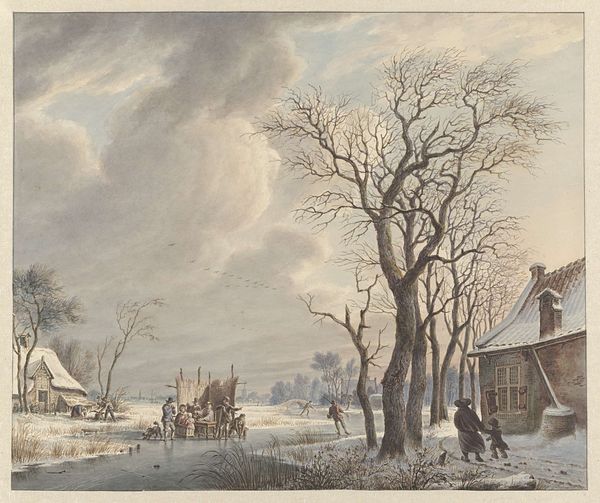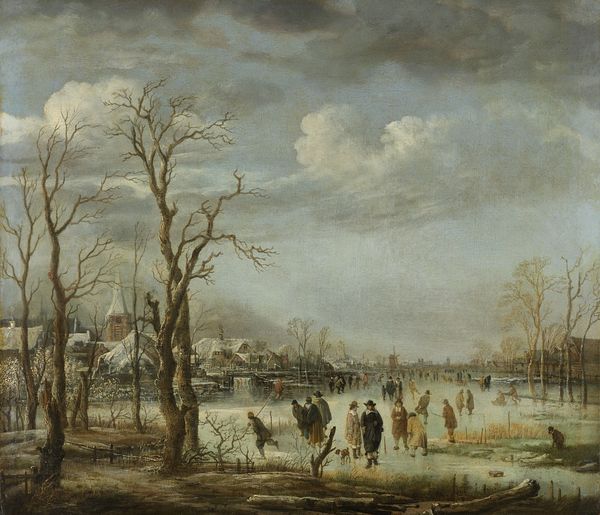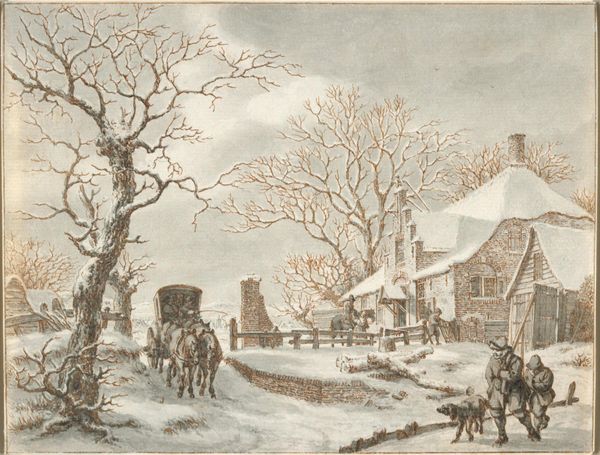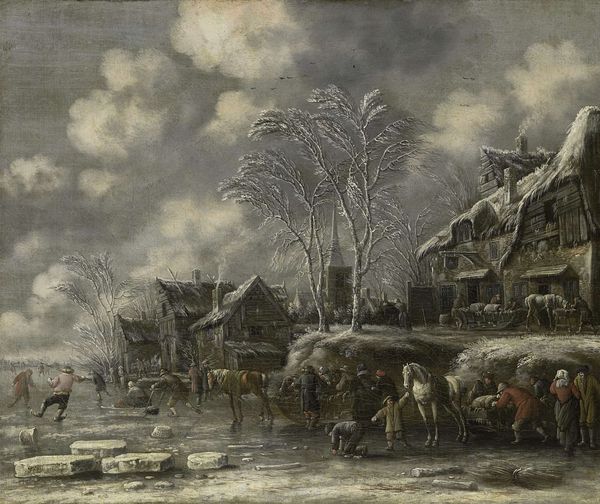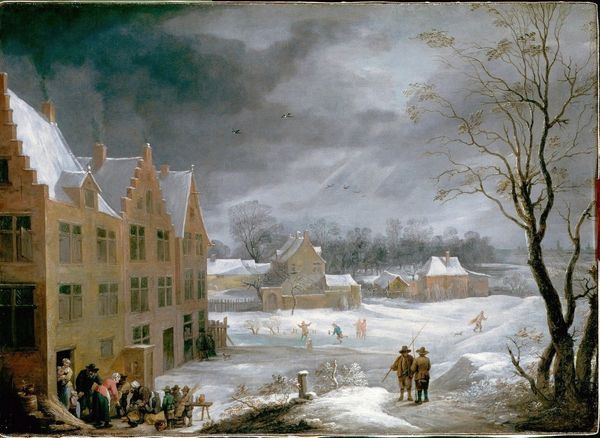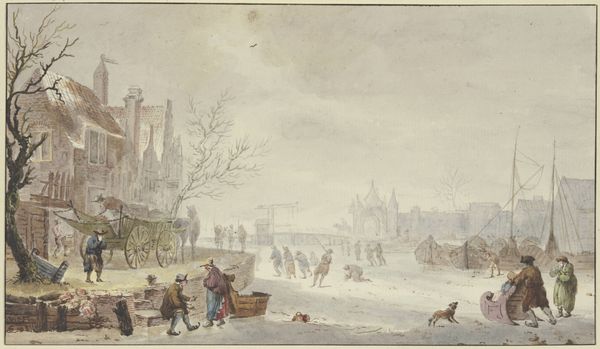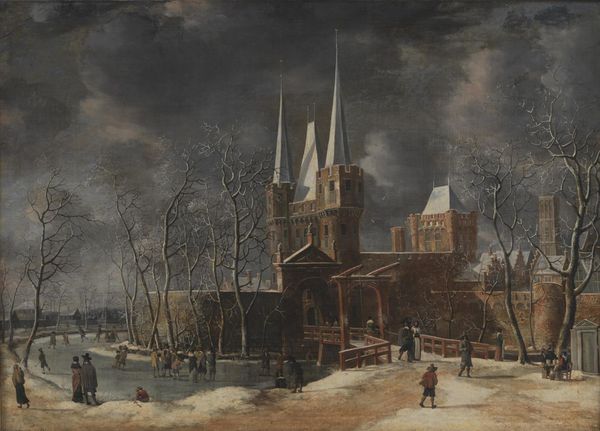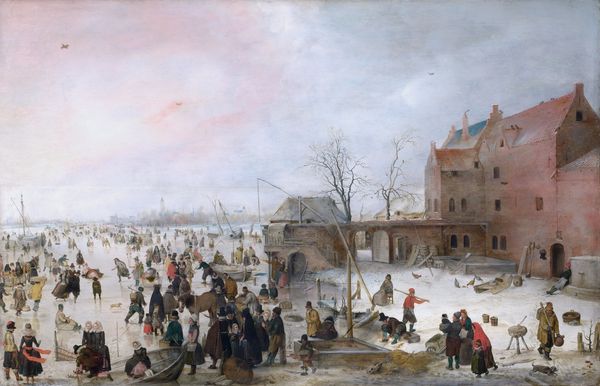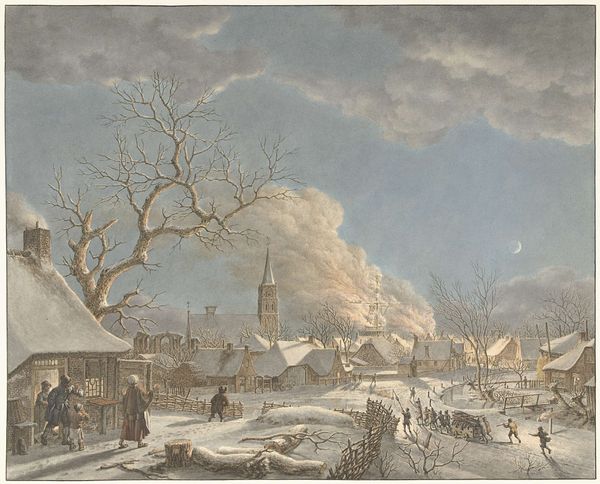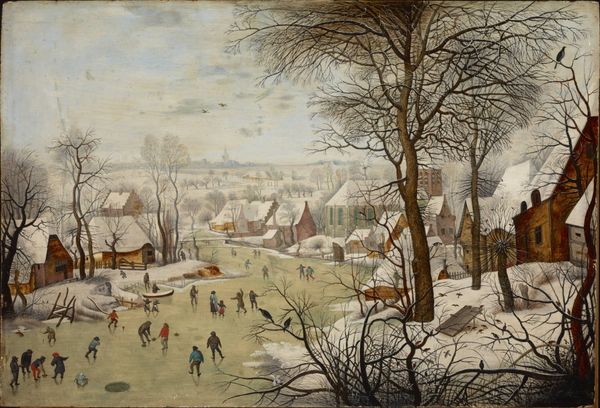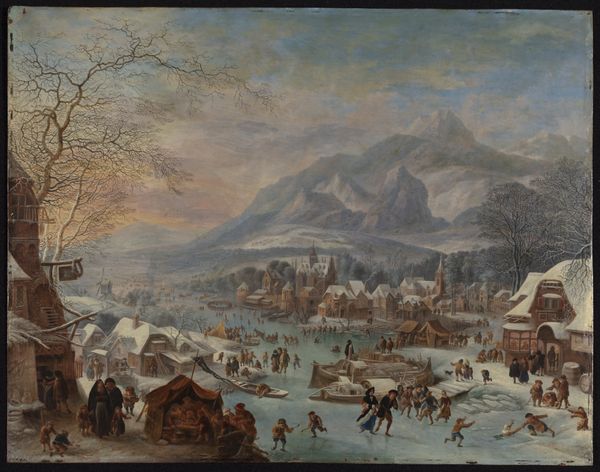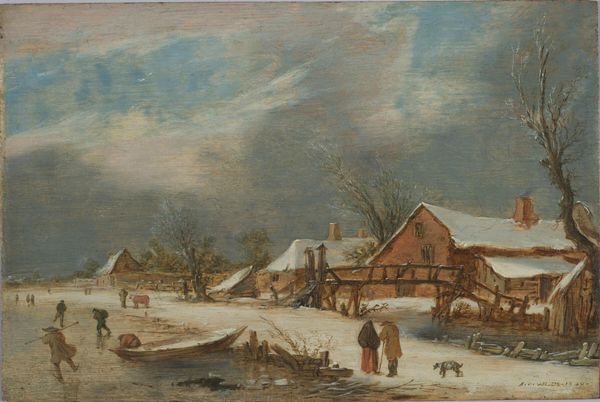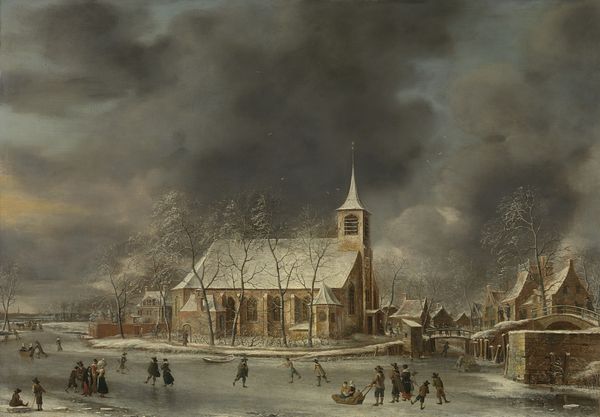
watercolor
#
dutch-golden-age
#
landscape
#
watercolor
#
cityscape
#
watercolour illustration
#
genre-painting
#
watercolor
#
realism
Dimensions: height 171 mm, width 225 mm
Copyright: Rijks Museum: Open Domain
Curator: Ah, here we have "Wintergezicht met ijsvermaak," or "Winter Scene with Ice Skaters," a watercolor possibly from somewhere between 1716 and 1783, painted by Barbara Dietzsch. Editor: It's a lovely scene! The cool blues and grays give such a palpable sense of cold. You can almost feel the chill in the air, but it also seems so lively with the activity on the ice. Curator: Indeed. The scene reflects a cultural memory of Dutch winters as times for community and recreation. Winter landscapes were a popular genre, allowing for playful portrayals of everyday life, much like Bruegel a century before. Editor: Absolutely, it highlights how communities adapt and even thrive in challenging conditions. Seeing the figures engaged in leisure brings to mind how even harsh environments can foster a sense of belonging. This almost feels subversive; finding pleasure even when surrounded by barrenness. Curator: You touch on something critical. Note how the built environment—the fortified tower, the houses clustered near the frozen water—reinforces that sense of community, offering protection from the elements. The buildings themselves could almost be seen as symbols of shared endurance. Editor: And the watercolor medium, with its delicate washes, emphasizes the transient nature of the scene. It's a fleeting moment of joy captured in time. Does this artist also capture the disparities present even within that landscape? I am also curious about who had access to those leisurely skating spaces. Curator: These scenes rarely delve explicitly into socio-economic disparities, though art historians often highlight that such genre paintings are generally targeted at the wealthier merchant class who had leisure time and an interest in viewing idealized versions of themselves or their society. Still, there's a democratic spirit present, with diverse figures engaging in a shared activity, which offered a counterpoint to the more rigid social structures. Editor: I can see the communal appeal despite it being idealized, especially now. There is a certain comfort in these portrayals. Even beyond the figures, I find this notion expressed visually as well with the architectural construction against the atmospheric landscape. Curator: Well, observing and discussing artwork across centuries opens our eyes to aspects of life that may resonate despite temporal and cultural distances, which offers insight to how cultures and ideologies survive despite the elements and hardships. Editor: It makes me think about our current moment, where communal activities are framed so radically different in response to climate-altered and turbulent present-day, and it is interesting to ponder how visual records of pleasure can simultaneously highlight both the familiar and the rapidly disappearing.
Comments
No comments
Be the first to comment and join the conversation on the ultimate creative platform.
